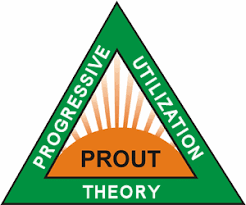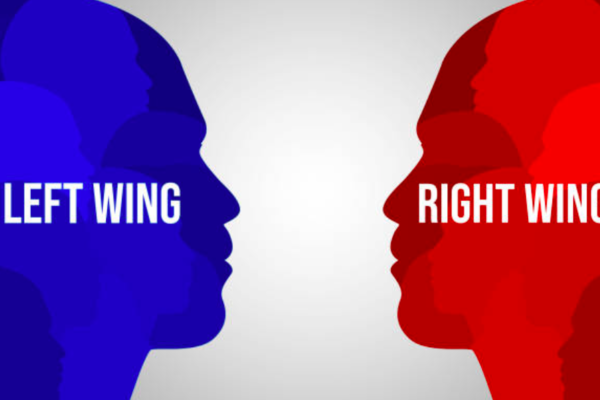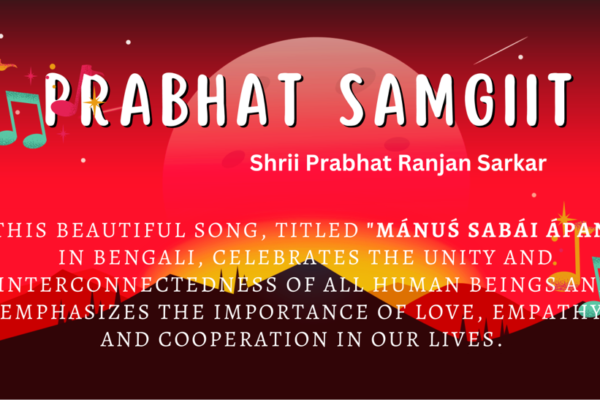– SHRII RAJENDRA DEV
(INTRO PART-1)
PRAMA IS A VERY SIGNIFICANT ASPECT OF PROUT: Prama is the principle, the law, of perfect balance. How can perfect balance be created? We know that society is going through a crisis because of careless planning. When society disregards the law of nature, even individual lives get put into jeopardy. Therefore the propounder of PROUT, Shrii P.R. Sarkar, has suggested that we should always consider how to do things so that there is balance.
Life itself is a dynamic process. It is not like a stagnant rock. Every moment multiple things are happening all around us, and we are acting out our sentiments in response to those events. Prout says that the world we perceive is nothing but physical transplantation, or objectivization, of the abstract psychic subjective. Whatever we see or do is first done in our mental world of imagination which is purely subjective and abstract. But that subjective world shapes all that we have around us. The skyscrapers, the most advanced technologies, transportation, etc., all these developments we see around us were not there a hundred years ago. First, they had to be imagined. Then, passing through drafting, drawing, architectural designs, etc., eventually, they became a reality around us. Everything humans create starts in the imagination, and once brought to fruition, these things influence the minds of new generations and perpetuate the thought process. It becomes essential to understand the theory and the laws of balancing things like our activities, planning, imagination, etc. Everything must remain in balance and harmony.
Prama is the subject of Prout. Prama is a topic for us to understand, which helps create a context for Prout. Through his theories, Adam Smith, the father of capitalism, promoted the idea that it is natural for humans to be selfish and exploit their fellow human beings and everything around them. And, as a consequence, he caused the kind of situation that we confront today. On the other hand, Karl Marx went to the other extreme, asserting that matter is the summum bonum, the center of life. And the outcome of this is that the whole world got engaged in a tug of war. How many innocent lives were lost! How many people died in the name of communism simply because Karl Marx projected such lopsided thoughts! As a result, a large part of the world’s population had to live behind the “iron curtain” for a long time. Thus, it is vital to know the context of the ideological premises that guide us. Prout suggests that we should always adhere to the Principle of Prama.
Now, what is the actual meaning of Pramá? The word Pramá is derived in Sanskrit from the root má prefixed by pra and suffixed by d́a and t́á. The meaning of the root verb má is “to measure,” “to fathom.” So, the etymological meaning of Pramá is “balance” in perfect measure.
In English, the two words “equilibrium” and “equipoise” are used in this sense, but there is some practical difference between these two words. “Equilibrium” is used in situations such as balancing out the physical strength of entities to be equal in number, i.e., it is quantitative, as in the case of a tug-of-war. And “equipoise” is used in the sense of a qualitative balance, as in weight.
For example, suppose there is a tug-of-war between two parties. If both the parties are equal in number and equally as strong, neither party can pull the other party towards itself; that is, there is a physical equilibrium between the two parties. Now let us take another case. Suppose there is a weight of one kilo on one side of a scale, and on the other side, there are some potatoes of equal weight, i.e., one kilo. Here numerical value has no consideration as we see in the tug-of-war. As there is equality of weight on both sides, the scale is evenly balanced. This balanced state in weight is called “equipoise.” Equilibrium and Equipoise are collectively known as Pramá according to its philosopher, Shrii P R Sarkar.
Harmony needs to be maintained in whatever we do, and the natural (quantitative and qualitative) balance must be considered.
Some propensities dominated the human mind during technological advancements and the industrial revolution, and we ignored that sense of considering the need to balance between self-centered psychic tendencies. Accordingly, as a result, a multitude of activities manifested, disregarding the principle of Pramá. People in nomadic or prehistoric times were all living in harmony with themselves and nature, understanding the law of nature for millions of years; humans, plants and animals, all understood balance with the law of nature. Now, modern human beings face this crisis of imbalance in their personal lives and collective lives.
The Metaphysics of Prout is based on the philosophy of Ananda Marga, whose fundamental principle is that this whole universe is made of consciousness and energy. So, wherever consciousness is more active, there is mind, and where energy becomes dominant, that becomes matter. Wherever there is matter, there is also mind, and wherever there is mind, there also must be a material base.
Einstein established that everything is made of energy and only energy. But this cannot be scientific because energy alone can not create varieties; there has to be something else that interplays with energy to create the multitude of varieties. Hence, considering that this creation is made of energy alone is not accurate; energy must become a force to create something. Energy works as a force, but science does not consider how energy is converted into a force. Though science says that force and energy are two different things, energy functions always in the form of force. As such, the study of physics remains incomplete.
Prout of Shrii P. R. Sarkar adds something here. He says that energy alone cannot create variety. There has to be something else to interplay with energy to create variety. That something else is consciousness ( cetana in Sanskrit).
Therefore energy + consciousness creates the force, and from that, matter appears gradually in five steps of ultimate crudification. Energy is always at work in the cosmos, but the nature of this energy is homomorphic metamorphosis. What is homomorphic metamorphosis? This is where one type of energy gets converted into a different kind of energy, which will further get transformed into another.
In all, there are only three types of energy in nature, i.e., static, mutative, and sentient. Static energy gets converted into sentient energy, sentient into mutative energy and then mutative into static energy. That is the natural order of conversion, and that cycle continues on and on and on. All these three forces act in a triangular way to maintain dynamic balance and harmony in nature.

This Natural Order of Conversion of Energy is called Homomorphic Metamorphosis
Param Purusa, original nature, is sentient, but it does not remain sentient forever. It becomes mutative, and after that, it becomes static. Again, after becoming static, it becomes sentient. And so, in this way, harmony is maintained, and ultimately, we get the triangle of balanced nature. This process is called homomorphic metamorphosis.
For example, let us say there is a rosebud (sentient) on a branch. This rose bud is opening up to become a flower. This blooming flower is in a mutative state. It is expressing itself. After a while, when staticity starts dominating, the mutative state starts fading, and at the end, it has completely disappeared. All those beautiful, charming petals have fallen, and nothing is left. This is the static state. So, the transformation goes from sentient to mutative and from mutative to static. But then what happens next after this? Once the static state is dominant, we find that eventually, we have seeds. Seeds are created due to this whole process of moving from sentient to mutative and then to static. Thus, finally, we get seeds. Seeds are the static, sleeping state of the living plant. But then again, from here, the seed falls from the plant and sprouts. The continued natural process starts sprouting the seeds. The sprouting of a seed is an awakening from static sleeping slumber. This is a plant’s sentient expression of life. A seed is a static, expressionless state, but once it germinates, it becomes sentient and starts growing into the mutative growth of a whole plant. After the plant’s growth slows down, staticity prevails. Then buds appear. You can see this homomorphic conversion everywhere in nature. The sentient-mutative-static cycle goes on endlessly.
….To Continue





